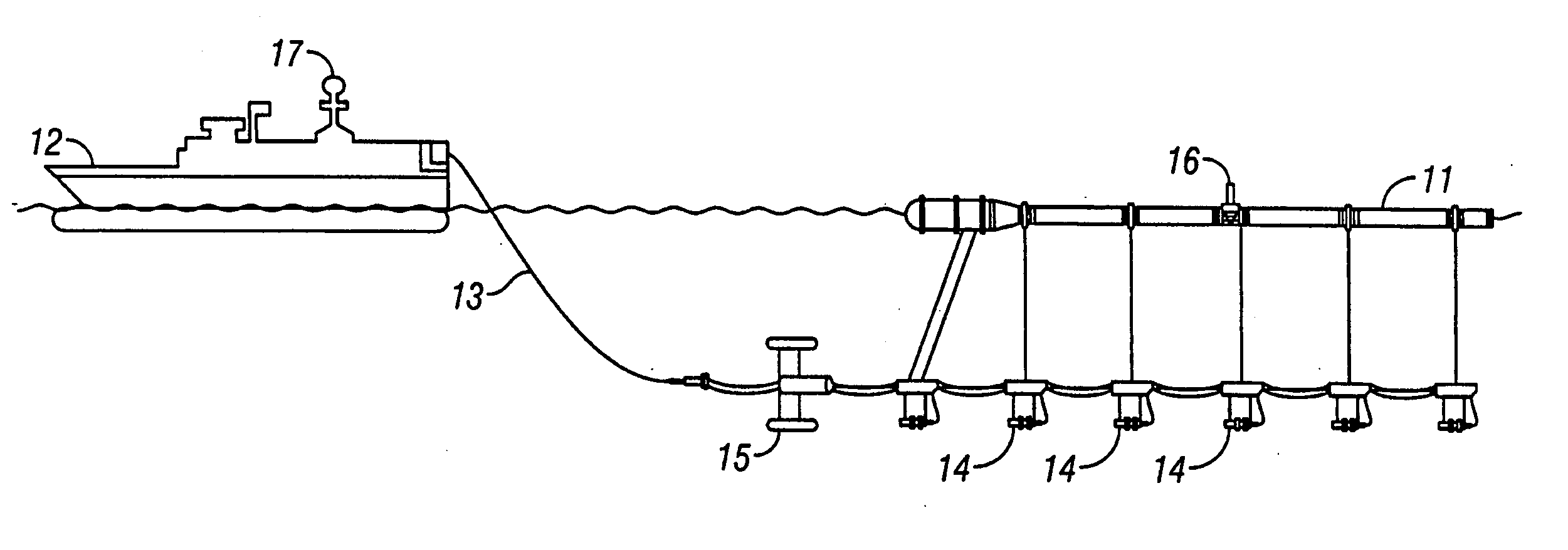Active steering for marine seismic sources
a technology of active steering and seismic sources, applied in the field of seismic exploration, can solve the problems of limiting the ability to position source equipment and receivers in different relative positions and orientations, diverters will not maintain the desired streamer position, and this, of course, has been impossible in a marine survey, so as to avoid obstruction in or under the water
- Summary
- Abstract
- Description
- Claims
- Application Information
AI Technical Summary
Benefits of technology
Problems solved by technology
Method used
Image
Examples
Embodiment Construction
[0035] The present invention provides a seismic survey system that includes one or more source arrays towed behind a tow vessel. The system may be used for conducting seismic surveys of the subsurface geological formations that underlie a body of water. The system comprises a source array and an independently steerable deflector device that is coupled to the source array, preferably suspended from a float element of the source array or alternatively, from a separate independent float. The deflector device controls the position of the source array by exerting a lateral force against the source array as the deflector device is towed through the water. The deflector device preferably includes one wing that may be angularly adjusted to steer the source array to a desired position behind the tow vessel.
[0036] The deflector device is a hydrodynamic body that uses the water velocity, achieved by being towed by the tow vessel through the water, to generate a lateral force to steer the sour...
PUM
 Login to View More
Login to View More Abstract
Description
Claims
Application Information
 Login to View More
Login to View More - R&D
- Intellectual Property
- Life Sciences
- Materials
- Tech Scout
- Unparalleled Data Quality
- Higher Quality Content
- 60% Fewer Hallucinations
Browse by: Latest US Patents, China's latest patents, Technical Efficacy Thesaurus, Application Domain, Technology Topic, Popular Technical Reports.
© 2025 PatSnap. All rights reserved.Legal|Privacy policy|Modern Slavery Act Transparency Statement|Sitemap|About US| Contact US: help@patsnap.com



